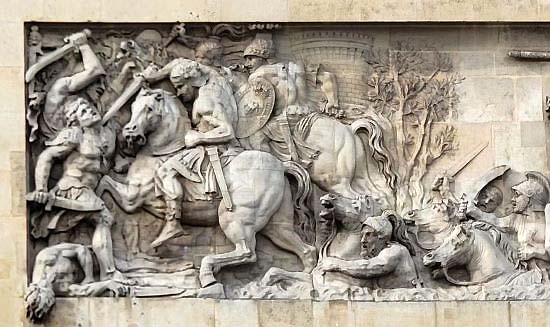MENU: 5.2. 1830: The people fooled
THIS OFFICIALLY-COMMISSIONED PAINTING HAS ALL CLASSES SURROUND THE NEW KING AS HE RIDES PAST 1830'S BARRICADES
Le duc d'Orléans en route vers l'Hôtel de Ville croise la place du Châtelet, 31 juillet 1830 ("The Duke of Orleans on the way to City Hall crosses place du Châtelet, July 31 1830) by Prosper Lafaye, 1830 / zoom
That cohesion will soon be as unreal as is the white horse in this work of propaganda, which the City commissioned and the Musée Carnavalet prominently exhibits.
A different struggle begins
* * *
Next,



%20x.jpg)

.png)

































